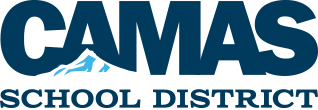States are required to report the names of all public schools that do not meet adequate yearly progress, called AYP, on the state assessment, based on the state’s AYP policies. These schools are considered to be in “school improvement” and are listed on the Office of the Superintendent of Public Instruction’s website.
In an effort to increase accountability, Title I schools and districts that do not make adequate yearly progress on the state assessment face a series of specific actions as defined in the re-authorization of the Elementary and Secondary Education Act. These actions are known as Steps 1-5 of School Improvement. Once a school has been designated a Step 1 school (or any other step), it will remain in school improvement until it has met AYP for two consecutive years. Once a school has met AYP for two years, it will move out of School Improvement entirely.
Information about schools that are in “need of improvement” and the details and actions of each step must be made available to parents and community members in an understandable, accessible format by the beginning of the next school year.
Step 1: School Improvement, Public School Choice
Public School Choice is the opportunity for parents to transfer their Title I children that attend a Step 1, School Improvement school to another school in the district that met Adequate Yearly Progress and has not been identified in School Improvement. The district assists parents with the transportation of their children by paying them mileage reimbursement for travel to and from their home and the new receiving school. Schools in Step 1 must set aside 10 percent of their building’s Title I budget to pay for professional development for certificated and/or classified staff. The goal is to provide training for school staff on improving the instruction for students in the sub-groups that did not meet AYP, thus improving the chances of helping this group or groups pass the Washington state’s assessment at the percentage needed for Adequate Yearly Progress.
Steps 2-5: School Improvement, Supplemental Educational Services
Supplemental Educational Services provides free tutoring for low-income students outside the school day in qualifying Title I schools. Low income is determined by free/reduced lunch status. Students may receive tutoring to improve reading and/or math skills. Parents complete an application and select the tutoring program they wish from a list of state-approved providers. Once verified, providers work out location and scheduling with the parents. Services can be done at school, in-home or at a community location. A Student Learning Plan is created for each student that is based on a district-prioritized subset of the Washington State Standards for Reading and the Washington Performance Expectations for Math. Providers communicate progress monthly. Parents are responsible for transporting their students, if necessary, as there are no district buses or mileage reimbursement for transportation.
Schools in Steps 2-5 also have the requirements of Step 1, so these schools also set aside 10 percent of their building’s Title I budget to pay for professional development for certificated and/or classified staff. The goal is to provide training for school staff on improving the instruction for students in the sub-groups that did not meet AYP, thus improving the chances of helping this group or groups pass the Washington state’s assessment at the percentage needed for Adequate Yearly Progress.
Free tutoring: Supplemental Education Services
As part of the state’s transition from the No Child Left Behind (NCLB) Act to the Every Student Succeeds Act (ESSA), our district will no longer offer Supplemental Education Services (SES) free tutoring. Our Title I, Part A school’s program will continue to provide extra instructional services and activities that support students identified as not meeting or at risk of not meeting the state’s performance standards in math, reading and/or writing.
Teacher Qualification Notice
In an effort to keep parents informed of the qualifications of teacher, the re-authorization of the Elementary and Secondary Education Act (ESEA) allows parents to inquire at school whether their child(ren)’s teacher(s) have met state qualifications and certification requirements for the grade level and subject taught. Parents may inquire whether a teacher is under emergency or conditional certificate through which state qualifications were waived, and they may request information about undergraduate or graduate degrees the teacher holds, including graduate certificates and additional degrees, and major(s) or area(s) of concentration. Parents can also ask about paraprofessionals working with your child in reading, writing, and/or mathematics. We can tell you whether your child receives help from a paraprofessional and whether he/she meets state qualifications and/or licensing requirements.
Camas School District annually conducts an audit of teacher assignments to assure that no teachers are assigned to areas for which they do not meet Washington State certification and/or endorsement requirements. Only on rare occasion does the District seek a waiver to certification. When this does occur, it is typically for a teacher who is within a few credits of completing the endorsement and is actively working on such completion. There are currently no teachers in our Title I schools providing student instruction under a State waiver in Camas. If you have any questions regarding this information, please contact the school principal.










